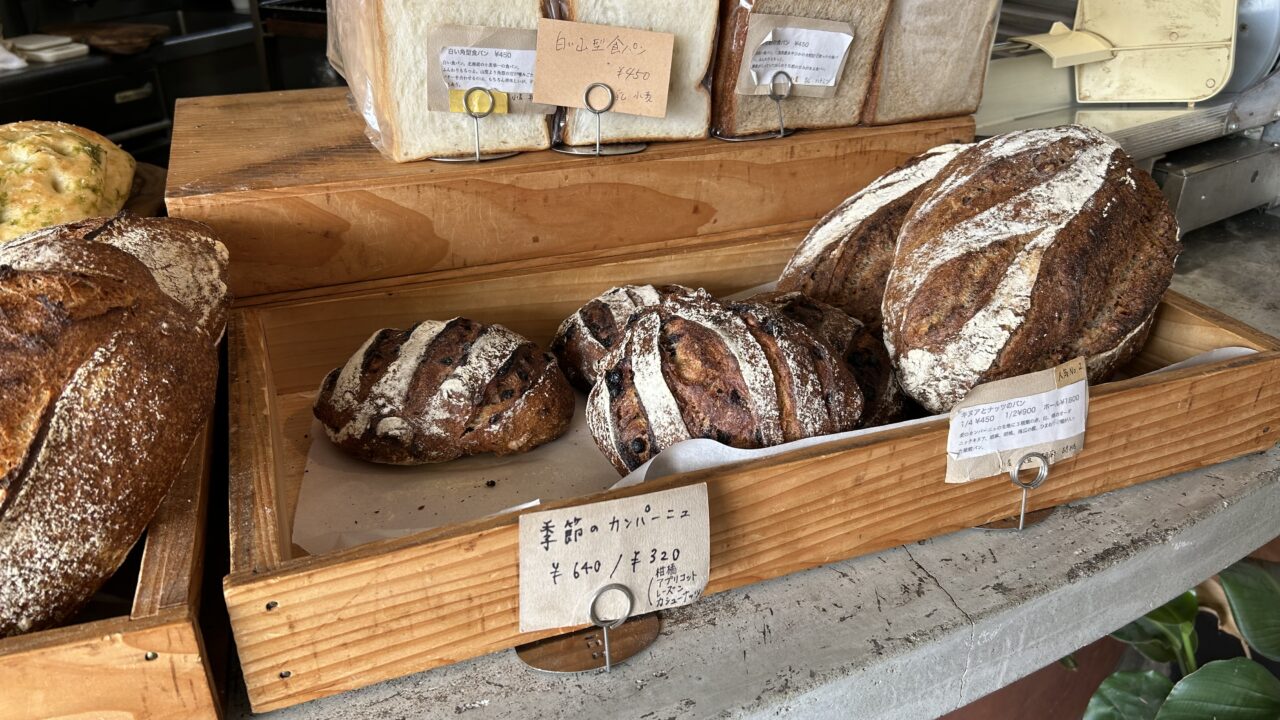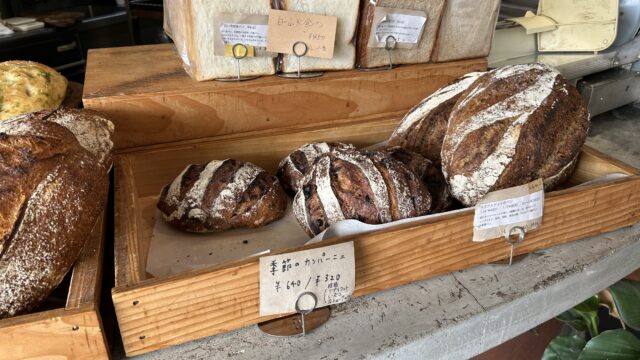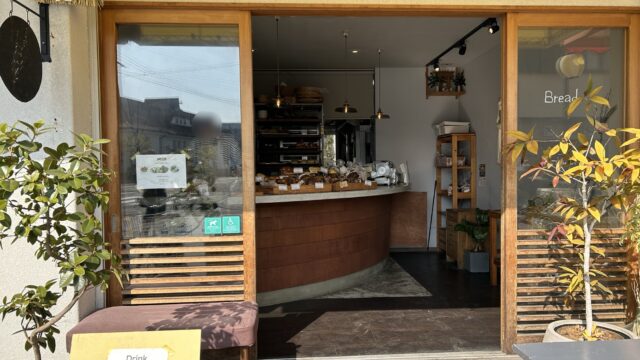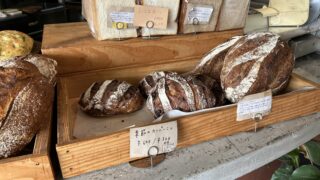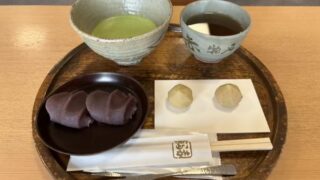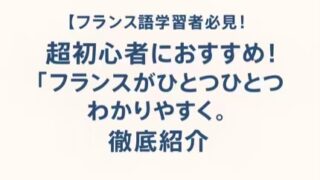Bonjour!
Today, let me share with you one of my absolute favorites: the seasonal campagne (pain de campagne) from my beloved local bakery, “Mugi” in Ise, Mie Prefecture.
And while we’re at it, I’d also love to dive into the fascinating differences between French and Japanese styles of campagne. Stick around till the end—it’s worth it!
The Jewel of “Mugi” Bakery: Seasonal Campagne
This time, I stumbled upon a gorgeous campagne generously filled with citrus, apricots, raisins, and cashew nuts.
The moment I took a bite, I was blown away—the nutty aroma of rye, the sweet-sour notes of dried fruits, and the crunchy texture of the nuts created a perfect harmony, like a three-part symphony in my mouth!
Previously, I tried their “Campagne with Three Types of Quinoa and Nuts,” which was fantastic as a meal bread. But when it comes to enjoying bread on its own, nothing beats a fruit-and-nut-packed campagne. For me, that’s the king of breads.
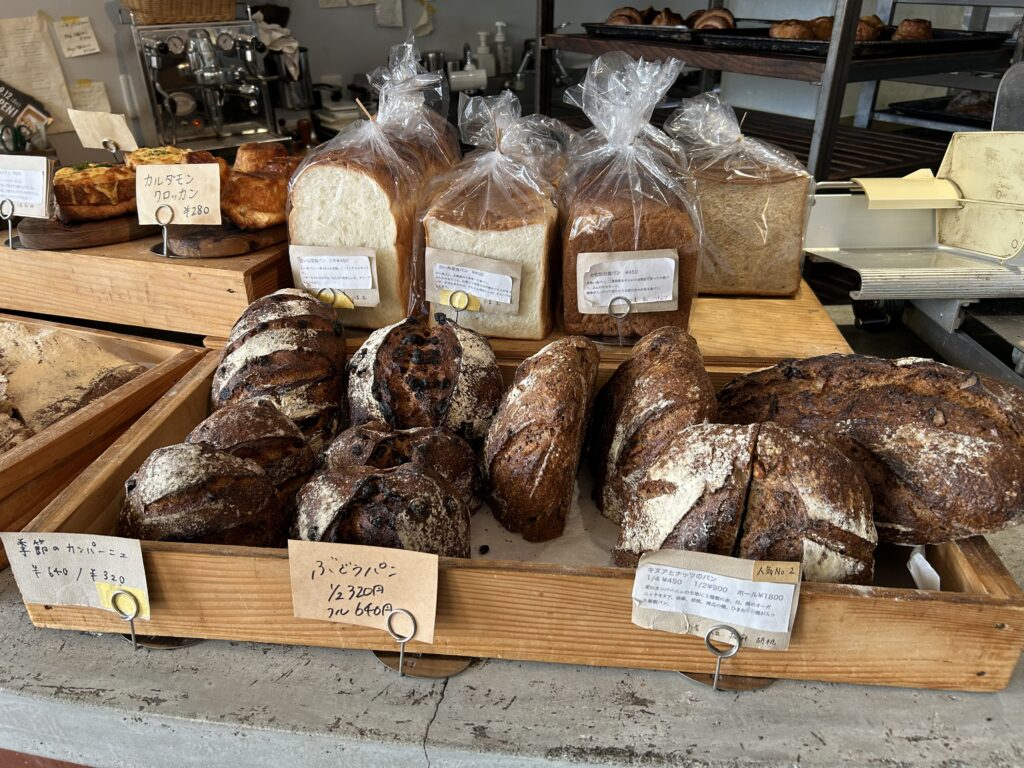
🇫🇷 In France, Campagne Isn’t the Star?
During my recent trip to France, I made a surprising discovery: campagne isn’t everywhere!
Sure, I spotted it occasionally in boulangeries, but at hotel breakfasts the stars were overwhelmingly croissants, pains au chocolat, and other viennoiseries. For lunch and dinner, it was always baguettes taking center stage.
Honestly, I felt a little let down—I had imagined stacks of rustic campagnes waiting for me in every bakery, but that simply wasn’t the reality.
Key Differences Between Japanese and French Campagne
Back in Japan, I did some digging, and here’s what I found.
| Characteristics | Japanese Pain de Campagne | French Pain de Cmapagne |
| Ingredients | Popular with dried fruits and nuts | Usually plain (without fillings) |
| Texture | Less rye, slightly softer | More rye, with a harder texture |
| Role | Enjoyed not only as a side with meals but as a “treat bread” on its own. | Served as an accompaniment to appetizers or main dishes |
In other words, the fruit- and nut-filled pain de campagne that is so beloved in Japan (or maybe just by me!) is not very common in France and may actually be a style that developed uniquely within Japanese bread culture.
In France, the standard breakfast usually consists of a croissant, pain au chocolat, or brioche, along with orange juice and coffee. For lunch and dinner, the bread that accompanies meals is almost always the baguette, leaving pain de campagne in a much less prominent role.
My Takeaway
So perhaps the fruit-and-nut campagne I adore (and maybe you too!) is actually a uniquely Japanese evolution within our bread culture. In France, breakfast means croissants, pains au chocolat, or brioche with juice and coffee. Lunch and dinner? Almost always baguettes. Campagne, though present, simply doesn’t stand out in the same way.
That’s why I’m so grateful for bakeries like Mugi, which push the boundaries of creativity with thoughtful ingredient pairings, delighting us with every loaf.
I can’t wait to continue exploring the deep world of campagne, appreciating the charms of both the French and Japanese styles along the way.
If you have a favorite campagne—or a bakery recommendation—I’d love to hear it!
Au revoir!
Here is the URL for ‘Mugi’ Bakery:
これはCTAサンプルです。
内容を編集するか削除してください。

